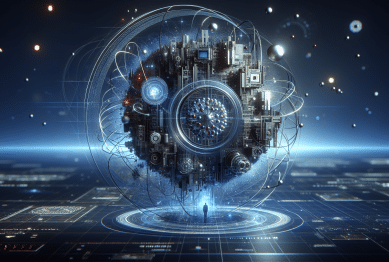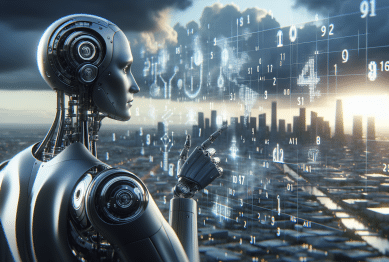Artificial intelligence shapes countless aspects of daily life, from how people work to the way they socialize and learn. This article explores real-world examples of AI technologies, reveals their everyday impact, and offers insight into how evolving machine learning is sparking change in communications, finance, healthcare, and beyond.
Understanding Artificial Intelligence and Its Growth
Artificial intelligence (AI) isn’t just confined to sci-fi movies or research labs. Today, AI is embedded in countless technologies — from the voice assistants in smartphones to algorithms that shape social media feeds. AI operates through machine learning, natural language processing, and neural networks. These systems ‘learn’ from data, adapt to new information, and make predictions or decisions. As technology advances, AI continues to evolve and extend its impact on daily routines and choices. People often interact with these intelligent systems without even realizing it.
The growth of AI has been remarkable, driven by big data, cloud computing, and new computational strategies. Machine learning, a core AI capability, refers to the ability of algorithms to improve themselves over time. Self-driving cars, translation software, and personalized recommendations all use this technology. Behind the scenes, data scientists and programmers train complex models using vast amounts of digital data. These breakthroughs allow AI to solve problems once thought possible only for humans, such as image recognition or sophisticated language translation (Source: https://www.brookings.edu/research/how-artificial-intelligence-is-transforming-the-world/).
The proliferation of AI in society can seem invisible at times. Yet, most services now rely on intelligent automation and data analysis. What does this mean for users? Tasks like route planning, fraud detection, and content moderation have all become more accurate and efficient, thanks to AI integration. Many experts agree that as technology matures, understanding how AI influences everyday decision-making becomes even more important.
AI in Social Media and Online Communications
Social media platforms depend heavily on artificial intelligence to manage the sheer volume of content generated. Recommendation engines suggest posts, friends, and groups based on user preferences. AI-powered chatbots now interact with people online, often providing customer support or facilitating shopping experiences. Even the algorithms behind content curation rely on machine learning to detect new trends, identify misinformation, and filter explicit material.
AI also shapes how people communicate online beyond just recommendations. Caption generators, real-time translation services, and smart reply features make it easier to connect globally. For example, image recognition systems automatically tag faces or scenes in photos, creating seamless user experiences. Automated assistants help summarize long conversations or prioritize important messages, reducing information overload in digital spaces.
With the broad adoption of cloud AI, companies enhance safety and user engagement. Improved cybersecurity tools can identify potentially harmful or harassing messages instantly. Sentiment analysis, an AI-driven tool, sorts through the tone of vast communication streams, offering brands and organizations key insights into public opinion (Source: https://www.pewresearch.org/internet/2021/06/16/artificial-intelligence-and-the-future-of-humans/). These advancements highlight how central AI has become to online interaction.
Smart Assistants and Everyday Productivity Boosts
Voice assistants such as Siri, Alexa, and Google Assistant run on sophisticated AI frameworks. These digital helpers offer reminders, answer questions, set timers, or control smart devices. By processing natural language, they bring convenience to tasks and save time — listening, responding, and even learning from user preferences over time. AI language models are the backbone of these technologies, supporting smart homes and hands-free information access.
Productivity applications use artificial intelligence to automate routines, filter spam, and organize emails. Calendar management, scheduling, and automatic booking confirmations are just some features enhanced by AI. OCR (Optical Character Recognition) lets users scan text and convert images into editable files, while spellcheckers and predictive text rely on deep learning algorithms to improve accuracy. AI’s role in office environments helps reduce errors and streamlines workflow, from project management to document collaboration (Source: https://www.nist.gov/artificial-intelligence).
Machine learning also helps adapt software environments to user preferences. Apps can prioritize notifications based on past behaviors, minimize distractions, or automatically suggest documents relevant to meetings. Tailoring user experiences through intelligent automation ensures people can focus on what truly matters, ultimately making work and life more manageable and efficient.
AI Transforming Healthcare Experiences
Artificial intelligence in healthcare delivers support far beyond an online symptom checker. Hospitals now employ AI to detect anomalies in medical imagery, support diagnosis, and manage logistics. Predictive analytics helps anticipate patient needs and optimize the allocation of resources. These advancements enable early detection of illnesses, sometimes before humans notice warning signs, which can improve outcomes (Source: https://www.nih.gov/news-events/nih-research-matters/artificial-intelligence-enables-early-cancer-detection).
Drug discovery and personalized treatment regimens benefit from rapid data analysis that only AI can manage at scale. In administrative settings, natural language processing supports swift processing of patient records, while chatbots triage appointment requests or offer post-visit reminders. Machine learning models can also track and predict disease outbreaks, providing public health officials with early warning systems that help save lives (Source: https://www.cdc.gov/amd/whats-new/artificial-intelligence.html).
Telemedicine leverages AI to connect healthcare providers and patients remotely. Automated systems interpret data from wearable devices, alerting practitioners to concerning trends in real time. This layered approach to healthcare support gives both doctors and individuals access to critical insights, proving that AI-driven tools continue to redefine how medical services are delivered and experienced.
AI in Financial Services and Fraud Protection
Banking and finance have embraced artificial intelligence for security, analysis, and customer experience. AI identifies irregular activity that could signal fraud, reviews transactions in milliseconds, and detects patterns impossible for humans to spot. Chatbots solve everyday banking issues, while robo-advisors recommend investment options tailored to personal risk profiles. These features illustrate AI’s influence on the modern financial landscape.
Automated loan approvals, credit scoring, and risk assessment tools help streamline processes, making finance more accessible to a wider audience. Behind the scenes, AI processes massive datasets and refines its accuracy with each transaction. Automated trading platforms rely on machine learning to respond instantly to market changes, with algorithms balancing portfolios to align with user strategies and levels of consent (Source: https://www.cfainstitute.org/en/research/foundation/2019/artificial-intelligence-in-finance).
Financial compliance and regulatory adherence have also improved, as AI tracks changes in policy and ensures automated flagging of suspicious activities. Institutions turn to AI-based cybersecurity to guard against data breaches and evolving digital threats. As AI becomes more advanced, its role in protecting assets and maintaining trust in the digital economy only grows stronger.
AI’s Role in Transportation and Navigation
The navigation apps people rely on daily for commuting and travel utilize AI to offer real-time recommendations. GPS mapping, route optimization, and predictive traffic models stem from powerful machine learning algorithms. Self-driving cars, though still in development for widespread use, already showcase AI’s potential for improving road safety and reducing congestion (Source: https://www.transportation.gov/automation/artificial-intelligence).
Public transit operations use AI forecasting to predict maintenance needs and optimize vehicle deployment. From airlines to subways, intelligent systems analyze sensor data to keep vehicles and infrastructure running efficiently. AI-powered traffic control helps reduce gridlock in urban areas and can even prioritize emergency vehicle routes, demonstrating a blend of smart city planning and technology.
Autonomous drones and robotics are expanding the reach of AI in logistics. Warehouses employ AI for inventory management, while delivery services use intelligent routing to bring goods to consumers swiftly. These advances mark just the beginning of AI’s ability to make transportation systems smarter, safer, and more responsive to changing needs.
References
1. West, D. (n.d.). How artificial intelligence is transforming the world. Brookings Institution. Retrieved from https://www.brookings.edu/research/how-artificial-intelligence-is-transforming-the-world/
2. Smith, A., & Anderson, J. (n.d.). Artificial intelligence and the future of humans. Pew Research Center. Retrieved from https://www.pewresearch.org/internet/2021/06/16/artificial-intelligence-and-the-future-of-humans/
3. National Institute of Standards and Technology. (n.d.). Artificial intelligence. Retrieved from https://www.nist.gov/artificial-intelligence
4. National Institutes of Health. (n.d.). Artificial intelligence enables early cancer detection. Retrieved from https://www.nih.gov/news-events/nih-research-matters/artificial-intelligence-enables-early-cancer-detection
5. Centers for Disease Control and Prevention. (n.d.). Artificial intelligence in public health. Retrieved from https://www.cdc.gov/amd/whats-new/artificial-intelligence.html
6. CFA Institute Research Foundation. (2019). Artificial intelligence in finance. Retrieved from https://www.cfainstitute.org/en/research/foundation/2019/artificial-intelligence-in-finance









